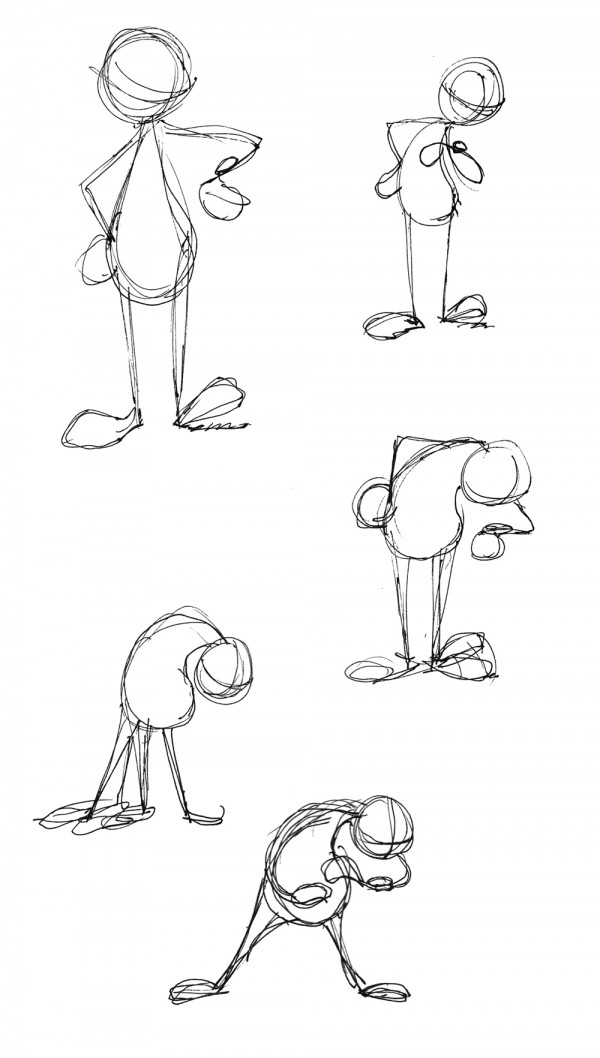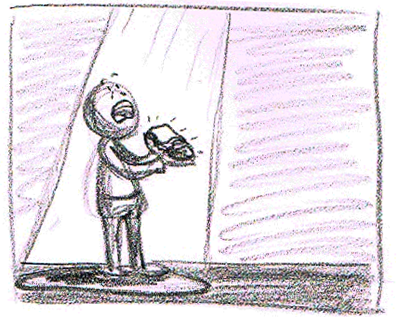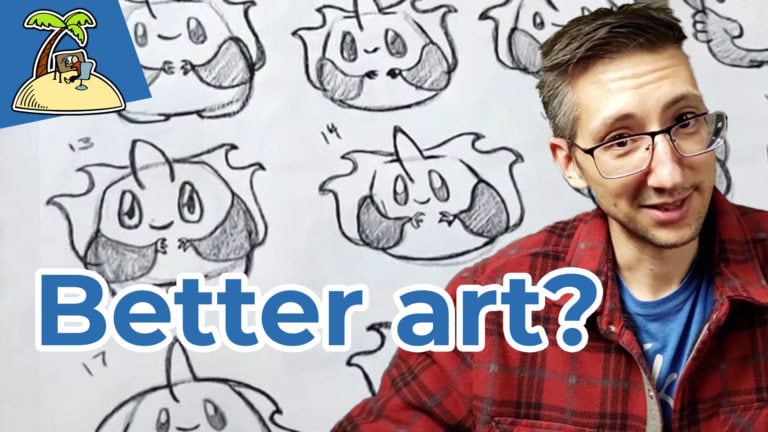Tips for Drawing: Posing
Last week we looked at Peter Casey’s question on form and volume. We’ll tackle the second part, Posing, in today’s article. As one of the most important things you can focus on in animation, Posing is not something to be taken lightly!
Peter continued the same line of wondering that I always think about with this:
“Posing: Yes posing is very important to animation, make the character happy make the character sad, pose the character so he feels enlightened from eating a spicy burrito. Look at the silhouette make sure it “reads” look at the action line. Make sure you know can read how the character “feels.” Really? Can you explain to me how? How do I know if the pose is with the character and “feels?”
‘You need to make your lines feel heavier and powerful.’
‘I do not understand.’
‘They aren’t heavy enough.’
‘I have already deduced that.’
This is what is so gosh darn infuriating to me. “
Me too, Peter. Those comments are easy to say, and truthfully accurate, but they aren’t always that helpful, are they? Here’s my answer. It’s what I’ve learned as I’ve gone along. Again, it’s not the only answer, and it may not even be “right” but it has helped me immensely.
Posing is something I’m excited to talk about because it was only recently that I had a MAJOR breakthrough with posing. I think breakthroughs happen often, we just need to recognize them. Too often we let them go by and focus instead on how we STILL aren’t as far along as we’d like to be. Mini tip: Savor the little victories! At any rate, here is how I’d recommend you think about it:
A good pose tells the story.
THAT’S ALL. You don’t need to know anything else. You don’t need to worry about line weight or silhouettes or lines of action. (Well, you do, but not right this second. I would argue that the best story-telling pose will trump any pose that specifically tries to consider silhouette or line of action. Why? Because the best story telling poses are made UP of those things. The story needs to be the FOCUS, and the blocks will fall right into place.)
What you are trying to do is tell the story the very best way you can. And guess how you do that? (Or at least, how I do that?) You draw 100 varieties of the same pose. Push things. Pull things. Something work? Put it into the next pose. Something weird? Take it out. Draw draw draw draw draw. Draw until you hate whatever story you are telling. If it’s a guy enlightened from a burrito, draw every possible way you can think of to have the image tell that story in a single picture as SIMPLY as possible, but as WELL as possible. Here’s an old (kind of crappy by my own current standards) example from my files:

“Man, I’ve been waiting here forever, where the heck is Joe? Why isn’t he here yet? Look at that, it’s been 20 minutes already. That second hand just keeps going tick tick tick tick tick and I’m getting tick tick tick ticked OFF!”
My first attempt wasn’t awful. It tells the story. Things could be better, though. Next pose is pushed farther. Not enough. Next pose, pushed even MORE. Getting there. Next pose, halfway through I hate it, this isn’t right, moving on. Next pose seems almost TOO much, which means we’re starting to really cook!
Now, I only did five poses there. That is 95 poses short of me finding the right pose. (100 is arbitrary. What I mean is “A LOT.”) Then once I find what REALLY tells that story, REALLY well, I will start thinking about lines of action, silhouette, and the rest. And guess what that means? Yep, another few hundred pose attempts to make it even better.
That is a stupid amount of work, right? That’s craziness.
Well here’s the awesome part: You don’t have to go through this process forever! No, this is part of the early stages. Before you know it (though never soon enough for our liking) the 50th pose you do will hit the jackpot! And then a while later, the 10th pose might get you there! And one day (I can only hope) you and I will be like Andreas Deja, Glenn Keane, or Eric Goldberg and find that golden poseKey poses are the most important poses of an animation. Every single one is needed to understand and advance the story. ... More on the first or second try. Unless it’s a super important pose, and then we (and they) are still going to do 100. But it will be a breeze by then, because we’ll have been doing it for so many years. (I daydream that Milt Kahl and the old masters could create amazing poses in their sleep! Perhaps unrealistic, but a fun daydream nonetheless.)
I wish beyond almost all wishes that I could point my graphite pencil at you and ZAP! You’d see things in form and understand the idea of “carving” a drawing or pushing a pose. (Heck, most days I wish I could do that to myself.) But it doesn’t work like that. The only way you’ll get there is through a LOT of drawing, observation, and effort. But like I said, LOOK for it. Keep it in your mind. Check that Glenn Keane “feel the cheek” image and KEEP that in your head. It will be frustrating for a while, but you WILL get there. It took me about three years of real practice on top of about 25 years of bad, copycat, not-really-trying practice before I really started to understand. Then every day was a new learning experience that taught me even more (and still does). It doesn’t happen overnight is what I’m saying.
I promise you, though, I was absolutely 100% in your shoes just a few years ago. I felt the same frustration, and it felt like it would never end. And some days I STILL feel that way. It will get better, but you have to put the work in. It’s a TON of work. Soldier through and one day you (if you’re like me) will be nearly in tears and bouncing off the walls because you finally, FINALLY “get” it. And that feeling is so awesome. And while enlightenment may not come from eating a burrito, it certainly doesn’t hurt to try that too.

I hope that was helpful in some way. Re-read it tomorrow and some day next week, because otherwise you’ll forget (or like I did with Josh’s advice, temporarily ignore it). Trust me on that one.








My first poses always suck. Good advice!
Much appreciation for this blog post. Pretty absorbing and well penned article, and really helpful as an animator. I will return in future.
I think the key to good poses are feeling it in your own body before you animate it because then you aren’t just making a puppet move around.
This really solved my problem, thank you! Back to animating now…
Love your site! I visit every week.
Perfect, just what I was searching for! 😀
Hi there this was very helpful would you mind doing more articles on posing please?
Hi, I want to ask about pose to pose in animation. What is the common problems faced by animators to produce 2D animated drawings characters related to pose to pose? Thank you.